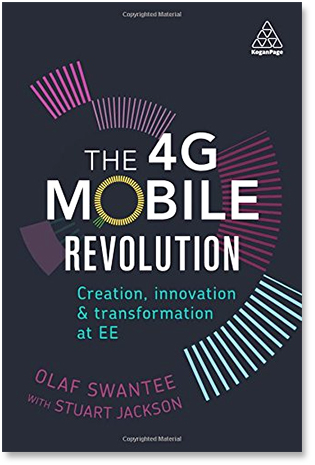The 4G Mobile Revolution, book review: A CEO's guide to business-building


The 4G Mobile Revolution: Creation, Innovation, and Transformation at EE • by Olaf Swantee with Stuart Jackson • Kogan Page • 195 pages • ISBN: 978-0-7494-7939-8 • £19.99
In film, what's known as 'auteur theory' attributes the finished shape of a movie to the director. Certainly some directors -- Alfred Hitchcock, for example -- leave an instantly recognisable imprint. But in most cases, the screenwriter William Goldman is justified in saying that the first time he heard of auteur theory, he said, "What's the punchline?"
It's easy to have a reaction a little like that early in The 4G Mobile Revolution: Creation, Innovation, and Transformation at EE, when former EE CEO Olaf Swantee praises Bill Gates for tackling child mortality among the world's lower-income populations by 2035, setting clear targets for reducing the prevalence of various diseases (among which he weirdly includes the already-eliminated smallpox). That is leadership, he and Stuart Jackson -- who worked in communications at EE -- write. (Jackson has gone on to become Nissan's VP of communications.)
Swantee had an arguably simpler task: his mission, which he chose to accept, was to take two businesses worth about £8.5 billion -- Orange and T-Mobile -- and blend them into a new organisation to sell a new technology that hadn't quite arrived yet and that hardly anyone knew they wanted. The new technology was 4G, and the organisation was EE, which Swantee led until BT acquired it in 2015 for £12.5 billion.
As you learn through snippets, Swantee has had a lengthy career in technology mergers: he began his career at Compaq, then moved to Digital Equipment Corporation, which was acquired by Compaq, which was acquired by Hewlett-Packard. After that, he moved to Orange, where he was put in charge of the merged EE. Among the leaders he lists alongside Gates (for "thinking big") as sources of inspiration are Tim Berners-Lee (for spotting "the opportunity"), and former Hewlett-Packard CEO Mark Hurd (for "the discipline of getting things done"). It's an interesting mix, not least because he praises Hurd for delivering consistent profits, while Berners-Lee's deliberate avoidance of profits by creating the web as an open standard is what fuelled its global spread.
Slogan-free
What makes this book more worth reading than most contemporary business books is that it's refreshingly free of slogans and one-word themes to throw at everything. While it would be interesting to read a review written by one of Swantee's former employees, the intent genuinely seems to be to share Swantee's own experience in order to help others build successful businesses -- granted, with a generous helping of praise for himself and his staff.
Aimed at CEOs and entrepreneurs, The 4G Mobile Revolution is much more of an instruction manual than the title makes it sound. Among the topics the book covers: the importance of diversity; how competitors were blended into collaborators; how a plan and vision for the new company was built and implemented; managing the launch and branding; and managing finances. One of the most difficult issues the team faced was regulatory, when the new venture sought to "re-farm" some of the spectrum in use by the two existing businesses to gain a lead of years over the competition.
The book ends with untrammelled enthusiasm for the BT acquisition. Barely a year on, it's probably too soon to tell.
Read more book reviews